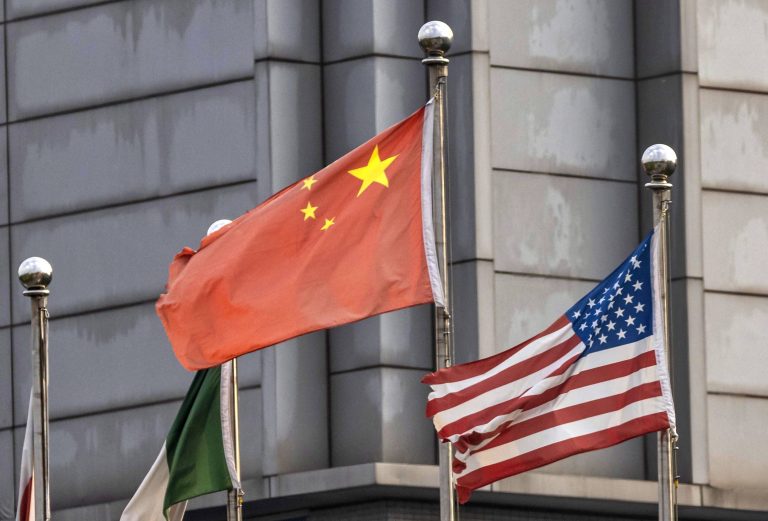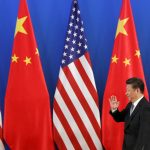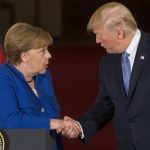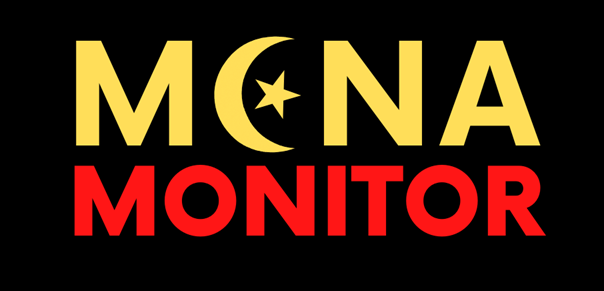THE WARSAW INSTITUTE REVIEW
Date: 29 October 2020
China – USA. The Cold War 2.0?
The escalation of tensions between the PRC and the USA during Donald Trump’s four-year presidency has prompted some commentators and scholars to identify the new strategic conditions as the Cold War 2.0. Despite the rising popularity of the term in the public discourse, it has many opponents who argue that it is unjustified and oversimplifies the actual nature of the process. Is this really the case?

Author: Paweł Paszak
The spectacular growth of China’s economic and military power in the 21stcentury has made the United States – for the first time since the collapse of the USSR – face a rival that has a potential to achieve a superpower status and replace it as the global hegemon. Since Xi Jinping took power in China in 2012, this country has rejected Deng Xiaoping’s pragmatic 24-Character Strategy, embarking on a more confrontational and ambitious foreign policy course. Xi’s rule is also a process of unprecedented concentration of power in the hands of an individual since Mao, with a gradual departure from the model of collective leadership and a return to Maoist symbolism.
If one understands the Cold War 2.0 as a simple return of mechanisms and strategies of rivalry with the USSR, then this claim is not valid. Globalization, the internationalization of production processes and the weakening of the domination of the West have made the world far from the divisions distinctive for the previous era. China has become an integral part of the world economy, international institutions and political relations. Effective and efficient rivalry with this country requires a different approach than the Cold War-era containment.
If, however, we consider the Cold War 2.0 as a notion that reflects not a return, but an evolution of the great power struggle in a globalized world, then such a term is justified. The way the concept of industry 1.0, 2.0, 3.0 or 4.0 marks new eras in terms of technology, the Cold War 2.0 is a further manifestation of the structural struggle of the superpowers for material and normative world domination. The current confrontation with China in many ways resembles the relationship between the US and the USSR between 1945 and 1991, but concurrently these phenomena are fundamentally different. In order to properly assess what remained the same and what changed as well as to identify the specific characteristics of this phenomenon, it is necessary to closely examine the military, economic, and ideological levels that set the framework for the new Cold War rivalry.

The military dimension of China-US rivalry
The Soviet Union was primarily a military threat due to the size of its army and nuclear arsenal as well as combat readiness. In this respect, contemporary China is still distinctly inferior to the US Army, but it is consistently bridging the gap through extensive modernization programs. In recent years, the Chinese People’s Liberation Army (PLA) has significantly increased the potential of its conventional and nuclear missile forces. The development and deployment of DF-17, DF-26D, DF-41 missiles and their various carriers has greatly increased the threat to US troops and bases in the Western Pacific. The Chinese Navy is also growing rapidly, already being the world’s largest fleet (350 units), with its arsenal further increasing in the coming decades. Despite numerous issues, a program of aircraft carriers and a fifth-generation multirole aircraft, capable of challenging the American F-22 and F-35, is still under development. What also deserves attention are efforts to expand the Strategic Support Force (SSF), responsible for cyberspace and information sphere in addition to providing an advantage in the C4ISR area (Command, Control, Communications, Computers, Intelligence, Surveillance and Reconnaissance). New type of troops, set in the PRC’s military strategy, are poised to achieve the goal of “winning local conflicts in the conditions of computerization,” in which situational awareness plays a primary role. According to the strategic documents, by 2049, thus the centenary of the establishment of the PRC, the Chinese Armed Forces are to achieve “world class” and the ability to defeat any opponent. But does the progress accomplished by the Chinese People’s Liberation Army put it in line with the military potential of the USSR?
In the vast majority of sectors, the US Army has not only a qualitative but also a quantitative advantage, as evidenced by its military budget (USD 700 billion vs. USD 180 billion), the number of aircraft carrier strike groups (11 vs. 2) and fifth-generation aircraft (300+ vs. 50). However, the forces of the United States remain dispersed in different regions of the world, such as Europe, the Middle East and Indo-Pacific. On the one hand, this increases Washington’s ability to shape the political situation and project the force in these areas, yet on the other hand, it limits the resources that can be used by the Indo-Pacific Command. PLA, although still significantly weaker, has concentrated its activity in the Western Pacific region and has subordinated modernization programs to acquire anti-access/area-denial (A2/AD) capacity and minimize the risk of foreign intervention in the region. In case of a conflict, the US Army would have to operate from the bases in allied countries (Japan, South Korea, Australia) and in the area of the so-called “Second Island Chain” (Guam, Mariana Islands and Palau). The “Tyranny of Distance” and the related extension of logistical routes are described in the documents of the Department of Defense as one of the main problems associated with the power projection.
In recent years, further reports of influential US institutions (RAND, National Defense Strategy Commission) have shown that in a potential conflict over Taiwan, China has a growing chance to win. The dynamics of the events, unfavorable for the USA, requires firm actions to counterbalance the growing threat from the PLA. The authorities in Washington will strive to form a coalition of states in the Indo-Pacific region, which, following the example of NATO in the Cold War period, would constitute the foundation of the US strategy. The activities of both countries and their partners will result in an increasing security dilemma in East Asia, consistently increasing the risk of a conflict. China is still not match up to the level of the military threat posed by the Soviet Union, but as its potential increases and the US position erodes, it will seek to disintegrate the American alliance system and achieve domination in East Asia.
The economic dimension: from the trap of interdependence to decoupling?
The most significant difference in comparison to the period of rivalry with the USSR is the high level of interdependence between China and the leading economies of the former “Free World” (USA, EU, Japan, South Korea). The PRC as the world’s second-largest economy in terms of nominal GDP (USD 14.14 trillion) is also the country with the biggest global trade balance (about USD 4.6 trillion) and export rate (USD 2.5 trillion). Such a huge success was possible because after the collapse of the Soviet Union, Western states recognized that the economic opening of China to the world not only creates great opportunities for optimizing production, but also provides a natural way to make political and social reforms effective. The concept of “change through trade” proved to be founded on erroneous assumptions, because, despite stronger economic ties, China had not liberalized its political system. The policies of the previous US and European governments came under heavy criticism from President Trump and his key associates. Donald Trump accused China of “the greatest theft in world history” whilst Vice President Mike Pence spoke at the Hudson Institute in October 2018 about the “economic aggression” which China had chosen instead of liberalization.
The USSR, despite its significant share of world GDP (the second largest economy in the world up until the 1980s), was a relatively isolated economic system. The access of Western companies and investors to the markets of socialist countries remained severely restricted and, as a result, the USSR did not have any strong instruments of pressure on its rivals. China is an integral part of global production networks, which is particularly evident in terms of the electronics sector. The scale of the dependence was demonstrated by, among others, the COVID-19 pandemic and the sharp rise in demand for medical supplies, which in many cases could be imported almost exclusively from China. This is what the US Secretary of State Mike Pompeo pointed out during his visit to the Czech Republic in August. “The CCP is already enmeshed in our economies, in our politics, in our societies in ways the Soviet Union never was,” he then warned. Such a significant scale of economic interdependence makes any attempts to isolate China extremely costly for leading American companies and their counterparts in the allied countries. The resistance of key transnational companies constitute one the most profound barriers to employ more hawkish foreign policy toward China as exemplified by internal debate within the US and the European Union.
Nowadays, China is also the world’s largest market of semiconductors/microprocessors (60%), industrial robots (36%) and one of the main sources of income for the US companies, such as Apple (17-25%) Boeing (22%) and Intel (28%). The situation is similar in the case of the leading German and European global corporations. In 2019, the Volkswagen Group sold more than three million vehicles in China, which is almost six times more than in the domestic market and nearly twice as many as in Europe. The Chinese market is equally important for the Mercedes/Daimler Group, which in 2019 sold 693,000 vehicles there – more than the combined sales in the USA (316,000) and Germany (318,000). Sales results of the BMW Group also largely depend on the market situation in China, which accounted for 28.6% of the number of vehicles sold in 2019. According to the OECD data, the value of FDI stock in 2019 came close to USD 3 trillion, which also shows the scale of financial involvement of Western investors in this country.
The scope and depth of interdependencies led the US authorities to promote the concept of economic decoupling with China on the international stage. It would involve the diversification of production chains by moving some factories back to their home country or to other Asian countries, such as India, Vietnam, Thailand or Bangladesh. Poland, which has developed an important role in the European division of labor as well as has a qualified and still relatively cheap workforce, could also potentially benefit from such a solution. However, this concept is encountering serious problems. Since the initiation of the opening reforms, the Chinese economy has achieved a number of comparative advantages, which make the whole process, should it go ahead, costly and time-consuming. Furthermore, in order to attain this goal, it would be necessary to coordinate the actions of virtually all US allies and partners, many of whom maintain a lively economic cooperation with the PRC and fear potential retaliation. Under current conditions, the United States is not able to stop China’s economic growth on its own, and its impact on former allies has noticeably weakened in recent decades. What illustrates potential trouble is the stance adopted by leading European politicians, expressed on the occasion of the visit of Chinese Minister of Foreign Affairs Wang Yi, to Europe in late August 2020. A number of prominent politicians, including the head of EU diplomacy Josep Borell, Dutch Prime Minister Mark Rutte and German President Frank-Walter Steinmeier, expressed skepticism about the concept of decoupling.
The problem for the United States is not only the fact of economic ties, but also the growing scientific and technological potential of the PRC, resulting in increased competition in the area of advanced technologies. Between 2000 and 2017, China’s gross expenditure on research and development (R&D) increased from USD 33.08 billion to USD 496 billion, which is higher than the funds allocated by EU countries for this purpose. For comparison, in the USA it increased from USD 269 billion to USD 543 billion within the same period of time. The inflow of funds allowed, among others, for dynamic development of the ICT sector (Information and Communication Technologies), artificial intelligence, electric cars, solar panels and high-speed rail (HSR). China has made progress particularly in the first of them, as evidenced by the global expansion of companies, such as Huawei, ZTE, Baidu, Alibaba and Tencent. Since 2014 in the ranking of WIPO and Cornell University, China has lifted its rating of the ICT sector from 36.1 in 2014 to 74.5 in 2019. For comparison, in the same period, the US index rose from 83 to 89 on a hundred-point scale.
China’s advancement in the international division of labor is in serious competition with core industrial centers in the European Union, the USA, Japan and South Korea, which so far have maintained a distinct advantage. In the coming years, Chinese authorities will make significant effort to restructure its economy, advance in global value chains and create and indigenous high-tech sector. Shall these efforts succeed, the United States and the West will face a formidable opponent capable of undermining its technological advantage.

Ideological dimension: A return to the rhetoric of the “Free World” and the “Evil Empire?”
An important aspect of the Cold War was the ideological rivalry between the United States, representing the so-called “Free World,” and the Soviet Union, described by President Reagan as the “Evil Empire.” The model of modernization based on socialist and communist ideology was often adopted by the post-colonial countries in Latin America, Africa and Asia, which were looking for ways to develop in opposition to Western countries. The influence of Moscow and Beijing as ideological centers supporting “fraternal” socialist states had a real dimension at the time, giving the rivalry between the USA and the USSR also a normative character. Contemporary China does not offer such an alternative to the Western development model; economically, it essentially accepted the superiority of capitalism, yet introducing far-reaching state interventionism. Despite the impressive GDP growth dynamics, the soft power of the PRC remains very modest. The hybrid economic and social system in the PRC is a specific construct and cannot be treated as a role model for other countries of the world, unless the oppressive nature of the state security apparatus can be considered exemplary. However, the absence of an ideological alternative to the West does not imply that this aspect is absent in the Cold War 2.0.
Communist China remains an authoritarian state – since 2012 when Xi Jinping took power, the tendency towards further tightening of control over political and social life has also become apparent, which may result in totalitarianizing the system on the basis of the Maoist China. The forced Sinicization of East Turkestan (Xinjiang), combined with the sterilization of the population and the detention of about one million inhabitants in “re-education camps,” evokes analogies to the worst practices of the “Great Leap Forward” and the “Great Proletarian Cultural Revolution”. Similarly, the de facto eliminating of Hong Kong’s autonomy through the introduction of the national security law in June 2020, conducted against the will of the majority of the population, confirmed the authorities’ lack of respect for fundamental civil rights and international obligations. In addition come abusive practices of the PRC security apparatus against Christians and secular human rights activists.
The process of concentrating power in the hands of Xi Jinping and his cricle, which has been in place since 2012, is another element that evokes analogies with the Cold War China. Xi Jinping is often referred to as “the most powerful leader since Mao,” due to the domination of people from his milieu in the Political Bureau of the CCP as well as the purges of opponents carried out on the occasion of the reform of the army in 2015 and the anti-corruption campaign. Currently, Xi also serves as the General Secretary of the CCP, President of the PRC and Chairman of the Central Military Commission (CMC), a body with key influence over the army and security apparatus. The actions taken by the Xi administration under the slogans of fighting “tigers” and “flies” were to eradicate corruption, both among leading political figures and low-ranking officials. Additionally, they served to eliminate political opponents in administrative and military structures as well as gave a clear signal that resistance to Xi would result in marginalization.
According to the findings of MacroPolo China, during the 2012-2017 term, there were only four people directly related to Xi who were the members of the Political Bureau, which is the key body in the PRC. In the new term of the Politburo, totaling 25 members, as many as 14 of them are people with ties to the General Secretary, dating back to his childhood, studies or earlier career in Shaanxi and Shanghai. The decision to include Xi Jinping’s thought into the Party’s constitution, reached at the 19th National Congress of the CCP in 2017, was also an expression of Xi’s strengthening position. This decision made it one of the ideological compasses, on a par with Marxism-Leninism, Mao Zedong’s thought, Deng Xiaoping Theory and the principles of the “three representations” and “scientific development.” No less important was the recommendation to abolish the current limit of two terms for the offices of President and Vice President, which opened the way for the Xi administration after 2023, when his second tenure ends. So far, there have been both formal and informal term limits, which were the Chinese version of the “checks and balances” principle, aiming to prevent a return to Mao’s dictatorship. The actions taken by Xi Jinping in institutional and symbolic dimensions indicate a partial return to the Mao era and the cult of personality. These processes herald the emergence of China, which is not only economically powerful, but also guided by an anti-Western sentiment, chauvinism and revisionism.
The outlined features of the Chinese system make the country strikingly opposite to Western culture, shaped by Christian and Enlightenment traditions. In this sense, the rivalry with the PRC also gradually assumes a civilizational conflict. The Cold War 2.0 in its symbolic dimension will increasingly be based on a dichotomy of the humanist West and the oppressive Communist regime. On the one hand, this is due to the real dimension of persecutions, on the other hand, because of to the convergence of such a narrative with the interests of the United States. Mike Pompeo clearly outlined the leading narrative of American policy towards China in his speech from July 23, 2020, titled “Communist China and the Free World’s Future.” Due to the democratic nature of the vast majority of the allies, arguments based on axiological elements have a chance to reach Western societies, dissuading them from further cooperation with China. Although the rivalry with the PRC has primarily a structural dimension and involves a competition for power, simultaneously, the moral issues play a significant role in the process of legitimizing politics. The hegemonic rivalry for the position in the international system will also have serious implications for the value system and law enforcing capabilities. On the basis of all the factors presented above, it could be expected that the language of political discourse will be tougher while axiological arguments more frequent.
Summary
All three analyzed dimensions of rivalry (military, economic, ideological) have several elements in common with the Cold War period. Certainly, the Cold War 2.0 is not a simple continuation of its predecessor, due to the diametrically different role of China and the USSR in world economy and politics. The possibilities of economic isolation of China remain severely limited and even an attempt to become partly independent of the country will require years-long efforts and generate additional costs. A probable scenario is the application of a hybrid doctrine of containment, involving the mobilization of the US Armed Forces and their allies in the Indo-Pacific region. Parallelly specific limitations of technological and investment progress of the PRC could be introduced. The realistic goal is not to completely isolate Chinese economy, but to cause a sectoral halt to its technological progress in order to secure an advantage in global production networks.
All texts published by the Warsaw Institute Foundation may be disseminated on the condition that their origin is credited. Images may not be used without permission.

















